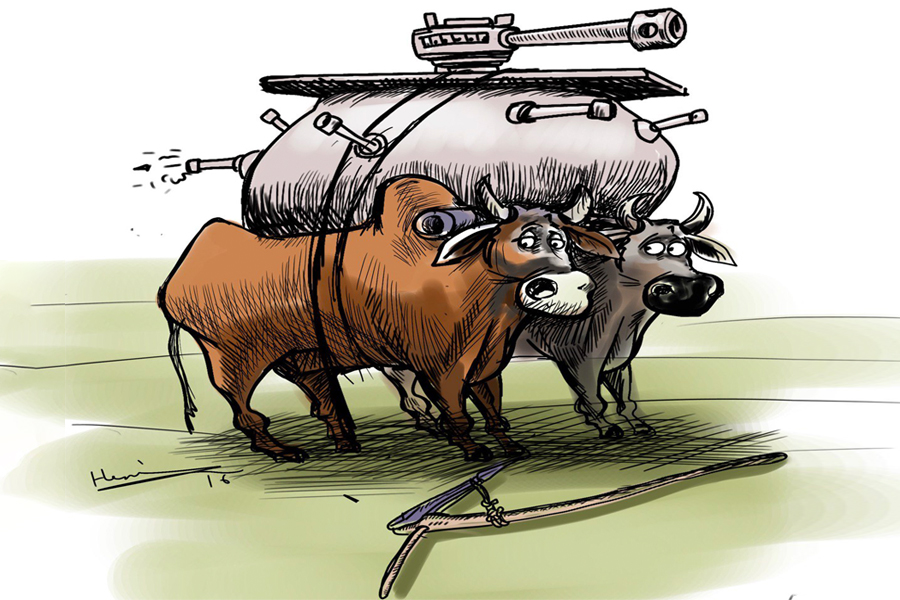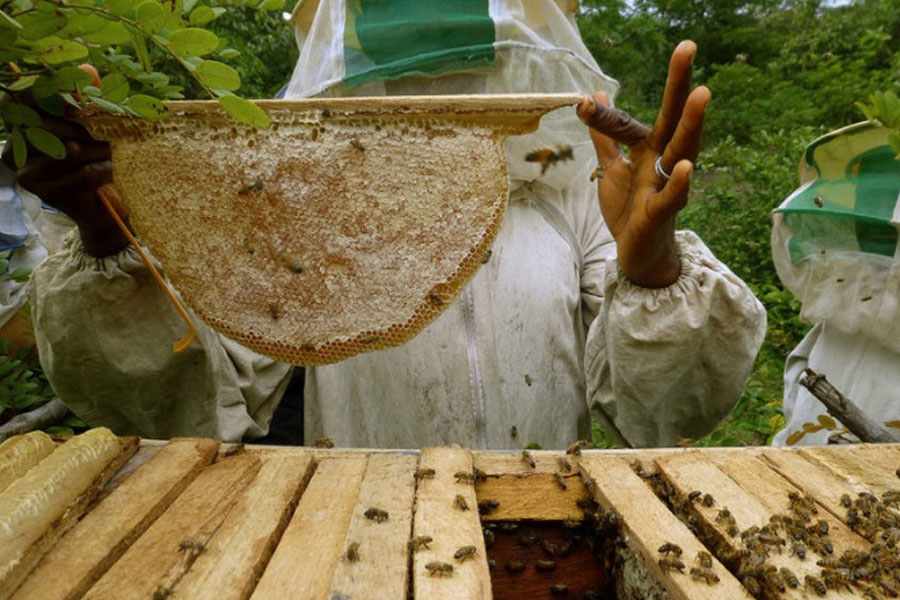
Editorial | Jun 22,2024
A hoot and holler away from my house, in consonance with a new cobblestone alleyway, residents were busily face-lifting their undersized open spaces – in their way. It was weeks back. Notable were seedlings planted on the fences. Two juxtaposed houses not too far from my house take the cake though, flaunting freshly planted silky oaks.
I was able to see the seedlings as they were planted close to their main fencings - concrete walls. With the barbed wires on top, it seemed like they were giving the walls a final touch. It immediately reminded me of an Armenian friend I have, born and raised here, now residing in London. Her heart though is always here. She usually updates her social media page on the status of her garden flowers.
It also recalls to mind the celebrations for Valentine’s Day, on February 14, when red roses were all around town. This time they were not on fences, but it was a showcase of the ascending local demand for flowers, for things that are aesthetic.
Steven Pinker, writer and psychologist, says we are visual creatures. Visual things stay put as sounds fade. It explains why I could not break my thoughts from the scene from my neighbourhood. The aesthetics help us think of better days, things still to come. As the anti-war song by Pete Seeger, “Where Have All the Flowers Gone?” goes, it reminds us that not everything is bleak and life could once more get better.
That is why I enjoy visiting this flower store now and then. It could be found squeezed between a liquor store and a retail shop for khat. A mother of three kids was busy inside, showing her kids how to arrange the plants and teaching them the language of flowers and their symbolism. She told them that red roses are associated with love and beauty. I joined the discussion, citing that the Romans put Loosestrife flowers under the yokes of oxen to keep the animals from fighting each other.
A flower caught my eye - a precious tulip, all green from the stem, the pure yellow corolla, with green flares on all its petals. It reminded me of the Semper Augustus, the empress of tulips in the vividness of its colour and the purity of its form.
“To call it simply a red and white flower would be like describing rubies and emeralds as red and green stones,” historian Mike Dash wrote. “Everyone who saw it concurred that it was a plant of quite exceptional beauty. It had a slender stem that carried its flower well clear of its leaves and showed off its vivid colours to the best effect.”
I was thrilled not only because of the courtesy of the woman running the small shop in my neighbourhood and having a reasonably priced yellow marvel tulip variety, the sort I keep dried at home. It was excellent news to hear of the difficulty she has of meeting customers' demands for the various varieties of flowers.
I went home thinking about the thousands of mainly young girls coming out from the flower sheds of growers while travelling by the side of the farms, whose livelihoods depend on the flower trade's success. The flower industry is imbued with vast potential. The domestic demand is only growing, while owners of flower farms have plenty of customers worldwide.
It speaks to the dynamism of the sector that 15 years since its inception, Ethiopia has become the fourth biggest exporter of flowers around the world. It has generated nearly a quarter of a billion dollars this year and employs over 200,000 people in the country.
Say it with flowers, as the saying goes. These colourful but small plants offer hope and calm, of better things to come. They add beauty to our cities, help ease unemployment and fetch foreign currency. The more of them there are, perhaps, the better things may turn out to be.
PUBLISHED ON
Feb 27,2021 [ VOL
21 , NO
1087]


Editorial | Jun 22,2024

Verbatim | Nov 04,2023

Commentaries | Feb 10,2024

Fortune News | Nov 20,2023

Viewpoints | Jul 17,2022

Commentaries | Mar 23,2019


Exclusive Interviews | Dec 23,2023

Fortune News | Feb 01,2020

My Opinion | Nov 05,2022

Dec 22 , 2024 . By TIZITA SHEWAFERAW
Charged with transforming colossal state-owned enterprises into modern and competitiv...

Aug 18 , 2024 . By AKSAH ITALO
Although predictable Yonas Zerihun's job in the ride-hailing service is not immune to...

Jul 28 , 2024 . By TIZITA SHEWAFERAW
Unhabitual, perhaps too many, Samuel Gebreyohannes, 38, used to occasionally enjoy a couple of beers at breakfast. However, he recently swit...

Jul 13 , 2024 . By AKSAH ITALO
Investors who rely on tractors, trucks, and field vehicles for commuting, transporting commodities, and f...

Oct 18 , 2025
The political establishment, notably the ruling party and its top brass, has become p...

Oct 11 , 2025
Ladislas Farago, a roving Associated Press (AP) correspondent, arrived in Ethiopia in...

Oct 4 , 2025
Eyob Tekalegn (PhD) had been in the Governor's chair for only weeks when, on Septembe...

Sep 27 , 2025
Four years into an experiment with “shock therapy” in education, the national moo...